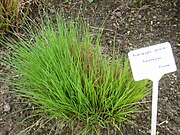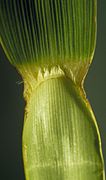Dry–mesic prairie is a native grassland community made up mid-to-tall grasses and a diverse mixture of forbs. The sandy loam or loamy sand soils of Dry-mesic Prairie support grasses that are shorter and grow less densely than Wet-mesic and Wet Prairies. Big bluestem, little bluestem, Indian grass, and porcupine grass are the most abundant grasses in dry-mesic prairie.

Bouteloua curtipendula, commonly known as sideoats grama, is a perennial, short prairie grass that is native throughout the temperate and tropical Western Hemisphere, from Canada south to Argentina.
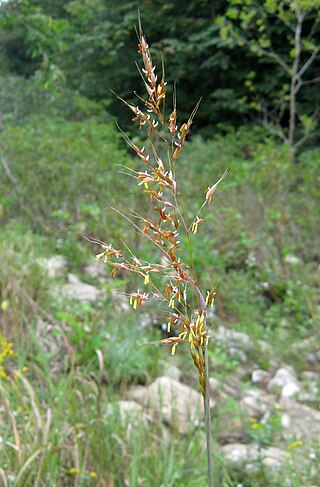
Sorghastrum nutans, commonly known as either Indiangrass, yellow Indiangrass, or golden feather grass, is a North American prairie grass found in the Central United States, the Eastern United States, and Canada, especially in the Great Plains and tallgrass prairies.
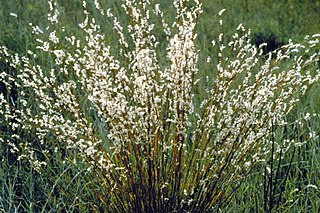
Schizachyrium scoparium, commonly known as little bluestem or beard grass, is a species of North American prairie grass native to most of the contiguous United States as well as a small area north of the Canada–US border and northern Mexico. It is most common in the Midwestern prairies and is one of the most abundant native plants in Texas grasslands.
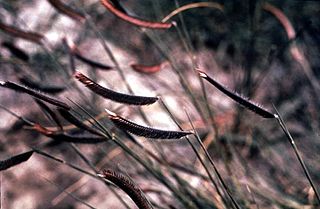
Bouteloua gracilis, the blue grama, is a long-lived, warm-season (C4) perennial grass, native to North America.

Sporobolus heterolepis, commonly known as prairie dropseed, is a species of prairie grass native to the tallgrass and mixed grass prairies of central North America from Texas to southern Canada. It is also found further east, to the Atlantic coast of the United States and Canada, but is much less common beyond the Great Plains and is restricted to specialized habitats. It is found in 27 states and four Canadian provinces.

Andropogon is a widespread genus of plants in the grass family, native to much of Asia, Africa, and the Americas, as well as Southern Europe and various oceanic islands.

Andropogon glomeratus is a species of grass known by the common names bushy bluestem and bushy beardgrass. This bunchgrass is native to the Americas, where it is widespread. It has also naturalized in other areas.
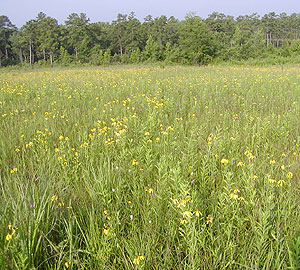
Harrell Prairie Botanical Area or Harrell Prairie Hill is a 160-acre (65 ha) tallgrass prairie nature preserve located within Bienville National Forest near Forest, Mississippi. It is a rare remaining example of the Jackson Prairie Belt in Mississippi. It was declared a National Natural Landmark in May 1976 and a Botanical Area by the Forest Service in 1980.

Tripsacum dactyloides, commonly called eastern gamagrass, or Fakahatchee grass, is a warm-season, sod-forming bunch grass. It is widespread in the Western Hemisphere, native from the eastern United States to northern South America. Its natural habitat is in sunny moist areas, such as along watercourses and in wet prairies. In some areas, it has adapted well to disturbed conditions.

Andropogon hallii is a sod-forming perennial species in the grass family, Poaceae. It is a bunchgrass which grows in tufts and can reach 7 feet in height under favorable conditions.
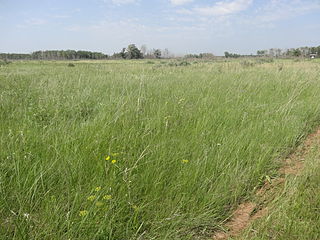
The Northern Tallgrass Prairie is one of 844 terrestrial ecoregions defined by One Earth. This ecoregion largely follows the Red River Valley in the Canadian province of Manitoba and the American states of North Dakota and Minnesota.

The Central tall grasslands are a prairie ecoregion of the Midwestern United States, part of the North American Great Plains.

Hesperia ottoe, the Ottoe skipper, is a butterfly of the family Hesperiidae.

Lespedeza leptostachya is a rare species of flowering plant in the legume family known by the common names prairie lespedeza and prairie bush-clover. It occurs in the Upper Midwest region of the United States. The flowers are creamy-white to purplish and arranged into a narrow terminal spikes.
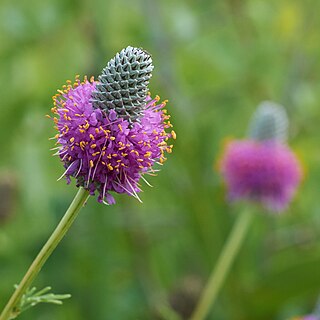
Dalea purpurea is a species of flowering plant in the legume family known as purple prairie clover. Native to central North America, purple prairie clover is a relatively common member of the Great Plains and prairie ecosystems. It blooms in the summer with dense spikes of bright purple flowers that attract many species of insects.
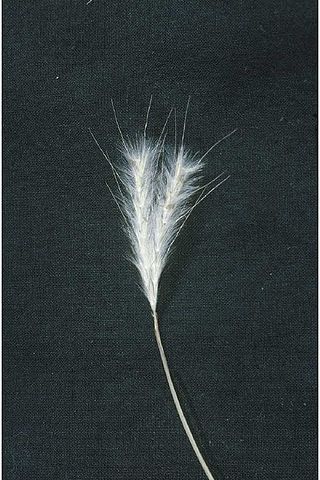
Andropogon ternarius is a species of grass known by the common names split bluestem, splitbeard bluestem, silver bluestem, and paintbrush bluestem. It is native to the southeastern, east-central, and south-central parts of the United States, where it occurs from New Jersey south to Florida and west to Kansas, Oklahoma, and Texas.

Carex inops is a species of sedge known as long-stolon sedge and western oak sedge. It is native to northern North America, where it occurs throughout the southern half of Canada and the western and central United States.

Hesperostipa spartea, formerly Stipa spartea, is a species of grass known by the common names porcupine grass, western porcupine grass, short-awn porcupine grass, porcupine needlegrass, and big needlegrass. It is native to North America, where it is widespread from British Columbia to Ontario in Canada and through the central and Great Lakes regions of the United States. It is a bunchgrass species in the genus Hesperostipa.
Andropogon capillipes is a species of grass known by the common name chalky bluestem. It is native to the southeastern United States as far west as Texas.


